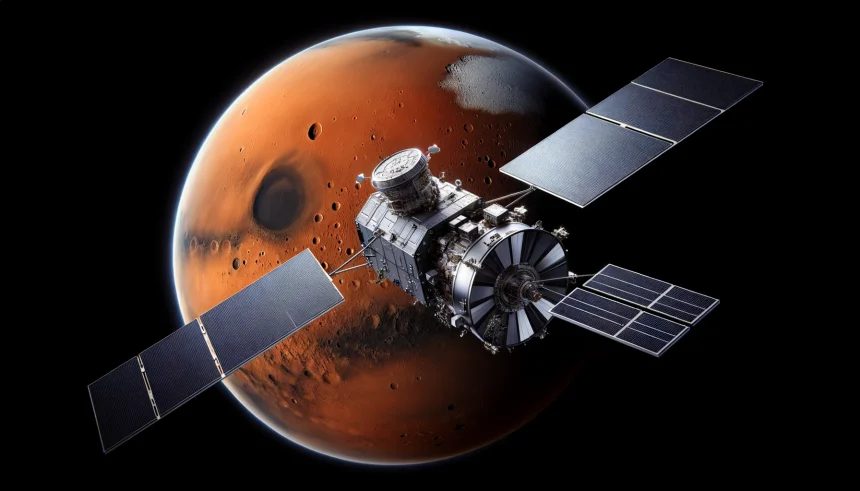The James Webb Space Telescope (JWST) has successfully captured a direct image of a temperate super-Jupiter, named Epsilon Indi Ab, located just 12 light-years away from Earth. This exoplanet is distinguished by its potentially ancient and cold nature. The discovery, a significant advancement in space observations, opens new doors for understanding planetary formation and evolution. The exoplanet orbits the K-type main-sequence star Epsilon Indi A within a triple star system. The star is accompanied by two brown dwarfs, making this system a prime laboratory for comparative studies.
Previous Observations Confirmed
Earlier hints of a massive planet orbiting Epsilon Indi A were confirmed by the JWST’s direct imaging. Prior investigations using the radial velocity method had already indicated the presence of this planet through the star’s wobble. Now, the JWST has provided a visual confirmation. The star’s radial velocity measurements suggested a large planet tugging on it, prompting further investigations with Webb. This research was presented in a Nature paper led by Elisabeth Matthews from the Max Planck Institute for Astronomy.
Unexpected Findings from JWST
The JWST’s observations revealed discrepancies in Epsilon Indi Ab’s characteristics compared to previous radial velocity predictions. Matthews noted, “While we expected to image a planet in this system because there were radial velocity indications of its presence, the planet we found isn’t what we had predicted.” The planet was found to be twice as massive and slightly farther from its star than expected. Additionally, its orbit and atmospheric properties did not align with initial models, raising questions about the planet’s formation and evolution.
Directly imaging exoplanets is typically challenging due to the bright light from their stars, which outshines the dim light from the planets. The JWST, with its Mid-Infrared Instrument (MIRI) Coronagraphic Imaging capability, managed to filter out the starlight, allowing clear images of Epsilon Indi Ab. This capability is crucial for observing older and colder exoplanets, which emit faint mid-infrared light.
Comparing new findings with past data highlights distinctions in the observed planetary characteristics. Earlier radial velocity measurements provided an indirect glimpse, but the JWST’s direct imaging has unveiled more precise details. The planet, about six times the mass of Jupiter, exhibits higher metallicity and different atmospheric properties than previously anticipated. The study also points out Epsilon Indi Ab’s elevated carbon-to-oxygen ratio, suggesting it formed in a carbon-rich disk, affecting its climate and formation history.
Other directly imaged exoplanets tend to be younger and hotter, still radiating heat from their formation. Epsilon Indi Ab, however, is older and cooler, more akin to planets in our Solar System. This characteristic allows astronomers to study exoplanets similar to our gas giants, offering new insights into planetary atmospheres and evolution.
Epsilon Indi Ab’s faintness in near-infrared wavelengths might indicate a cloudy atmosphere or the presence of compounds like methane or carbon dioxide, which absorb shorter wavelengths of infrared light. The findings suggest a richer carbon environment, affecting its climate and potentially indicating where it formed and if it migrated. The planet’s high metallicity implies a more efficient formation process, possibly indicating it accumulated mass rapidly.
This discovery emphasizes using previous telescope data to inform JWST’s target selection. The clear radial velocity signs justified the choice to observe Epsilon Indi A, despite discrepancies in expected exoplanet properties. Future spectroscopy and imaging will provide more detailed insights into Epsilon Indi Ab, enhancing our understanding of its formation and characteristics. The system’s association with two brown dwarfs also presents a valuable opportunity for comparative studies on substellar objects.
As a result, Epsilon Indi Ab remains a promising candidate for further observations, with its bright flux and wide separation from its star aiding in detailed spectroscopic characterization. This allows for more accurate constraints on its metallicity and carbon-to-oxygen ratio, advancing our knowledge of exoplanetary systems.










